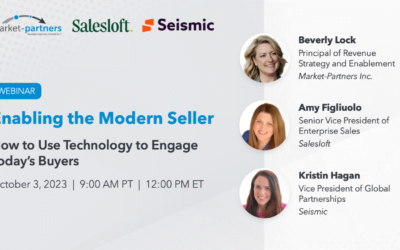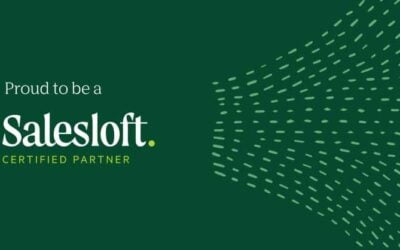One of our earliest adopters of the Seismic Enablement Cloud was able to turn around and win a significant new client shortly after setting up the platform. But it started with a mindset shift, one that completely changed that way they thought about content and delivery.
As we helped the team catalog a rather fabulous collection of marketing collateral, we noticed there was a tendency to think about each piece in terms of the vehicle; all the PowerPoints were put together, as were the white papers, the case studies, and the product descriptions. To some extent, this was a very natural way for the firm to think about the assets they used across sales and marketing. It would have been relatively easy for a salesperson to search amongst the PowerPoints for the presentation they were preparing. Yet we quickly realized that this was the wrong way to go about sorting the material. We started calling this more traditional thinking the “grocery store approach.” When you walk into the grocery store, you go to the dairy section for milk, the butchers for meats, and the vegetables for potatoes. However, while internally organizing collateral in this fashion makes things easy to find for sellers, it doesn’t add any value for buyers.
We instead spent time understanding exactly how and when each piece of collateral should be used. Once these qualities were outlined, we then generated a classification system that grouped collateral together. This system focused on the nature of the market, the role of the receiver, the stage of the buying journey, and other variables, such as the specific value proposition and the hurdles that needed to be overcome.
At first glance, this approach might have appeared more cumbersome, causing confusion for any salesperson looking for something specific. But therein lied the opportunity to add value to the buyer. If a salesperson was searching for their favorite piece of collateral, the one they had always used, these categories were implicitly asking, “Is it the best piece you could be using?” Despite needing to put a few more moments thought into the selection process, salespeople were presented with better options. Not only could they readily find great collateral they had not previously thought of using, but also collateral that had been shown to be more effective for where the buyer was in their buying journey.
Once all the collateral was catalogued, it was immediately put into practice during a series of interactions with a prospective buyer. By utilizing digital sales rooms and the associated analytics, the sales team was able to track the high levels of engagement with each piece of collateral they sent. Using the resultant data, they built a table that linked each of the primary players in the organization to specific areas of curiosity. When asked for their final proposal, the sales team created a series of short videos talking to the exact points they knew were of interest to the each of the players. Perhaps most importantly was that these videos segments had more than just salespeople, including various specialists and executives from the selling company.
We are happy to share that this strategy won the business. The feedback from their new client was that the selling organization had totally differentiated themselves in the way they understood their challenges and spoke effectively to both player concerns and desires.
It may take longer to develop and deploy collateral in this fashion, but the results speak for themselves. Further, as the selling firm became more familiar with Seismic, the power of the Content Properties has actually made things faster and easier to find. Because salespeople are served better, more relevant content, the organization has achieved more speed with less drag using less power – ultimately for the benefit of their customers.




